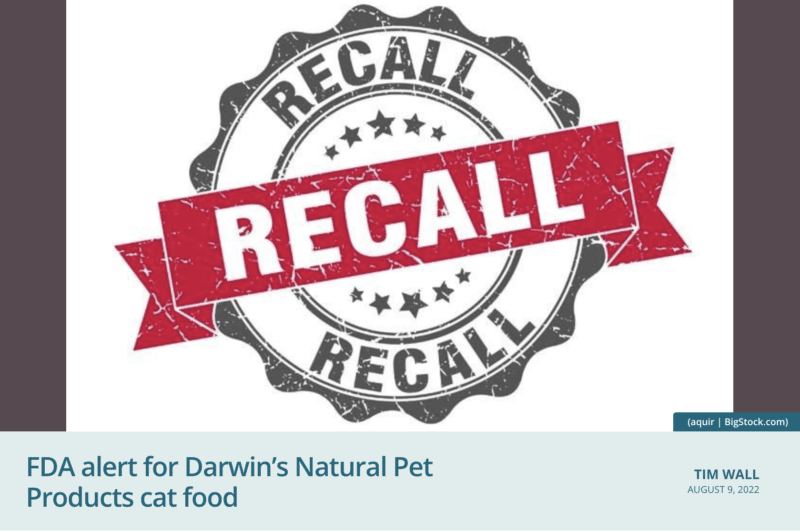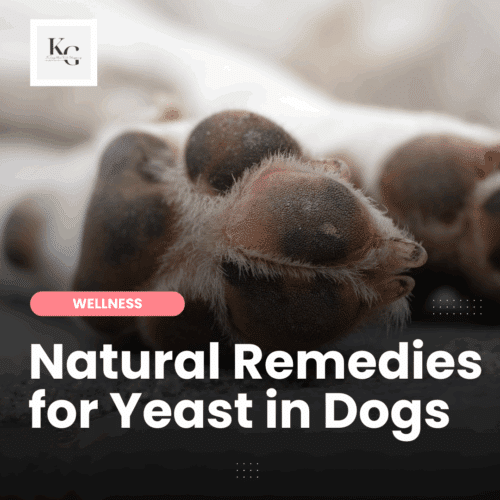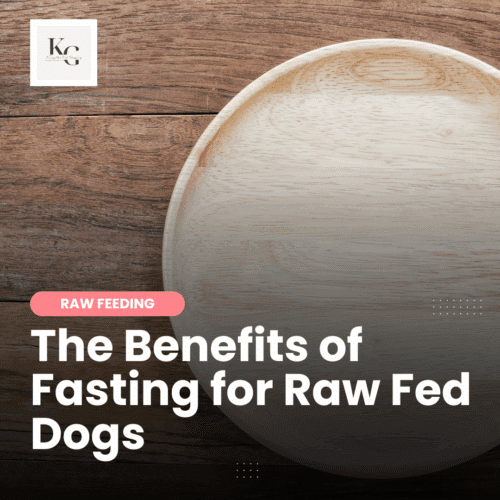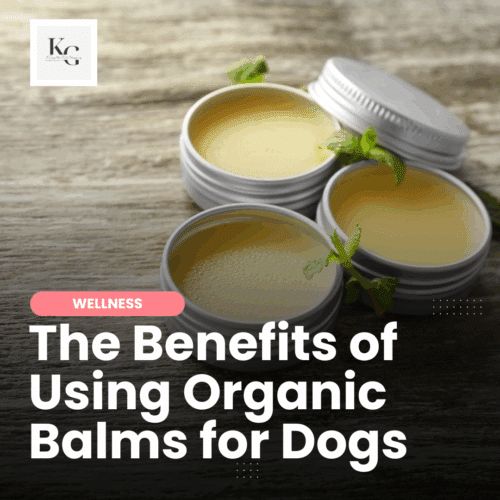Keep the Tail Wagging is supported by pet parents. I occasionally earn a commission (at no additional cost to you) when you click through an affiliate link to one of my favorite products. Thank you for your support. Read More
Science isn't my favorite subject. I love reading, and I love learning new things but show me a study, and I'm likely to pass out and sleep for a few hours because interpreting someone's scientific findings is boring.
I used to believe a great alternative was to follow folks who love science, but this also comes with issues. I've found that the people interpreting the science have their own biases that they incorporate into the conclusions. It's challenging to avoid confirmation bias, which is the tendency to interpret information that supports one's beliefs. As a blogger, I have to make a concerted effort to search for and read articles that don't give me the answer I want.
When I suspect confirmation bias, I don't assume that the person sharing information is being manipulative. Google's algorithm delivers the information we seek. If I'm looking for the benefits of a nutrient, my search results may not include the risks – I have to look for those separately.
I found the following tips on a graphic, and I'm sharing examples (from my experience) in the fresh food community. I focused on six tips here, you can see the full graphic to read all twelve tips.
Please feel free to add your examples in the comments.
1 – Sensationalized Headlines
Article headlines are designed to get your attention and inspire you to click to learn more. If the author does a good job, people may not bother reading the article, using the headline as proof of wrongdoing. Headlines can be misleading.
Example: FDA alert for Darwin’s Natural Pet Products cat food
This headline came from PetFoodIndustry.com and, combined with the graphic above, gives the impression that Darwin's Pet issued a recall at the behest of the FDA. We see these notices every year. A dog or cat gets sick after eating raw pet food, and subsequent tests confirm salmonella or another bacteria.
To the experienced raw feeder, this isn't cause for concern because we understand that there are bacteria in raw meat. There are also bacteria in dry pet food. However, this can be frightening to the novice raw feeder, especially when coupled with a veterinarian's warnings.
This article fails to share that the kittens weren't on a raw diet; they got into an adult cat's food. By the way, the adult cat was fine.
2 – Misinterpreted Results
Articles can misinterpret the findings to prove a point or create a good narrative. When we find the original study, we may learn that much was left out of the article.
Example: Raw meat dog food germs linked to human infection
Another article by Tim Wall of PetFoodIndustry.com claims that raw feeding has been linked to urinary tract infections in dogs. The study appears manipulated to reach these conclusions:
- the study doesn't share the other foods the dogs were fed
- the study doesn't acknowledge the other risk factors
- the study doesn't explore if any of the dogs were on antibiotics
- it turns out that only one human had a urinary tract infection
Susan Thixton does a great job of debunking this study on TheTruthAboutPetFood.com.
3 – Conflicts of Interest
During the DCM scare, I often heard “follow the money” as people were scrambling to provide a connection between grain-free diets and dilated cardiomyopathy. I will admit that the information was compelling, and I still have a hard time believing that adding legumes to dry dog food in place of grains didn't negatively impact the cardiac health of dogs.
Example: Taurine deficiency and dilated cardiomyopathy in golden retrievers fed commercial diets
Three veterinarians often quoted during the DCM investigation were Dr. Lisa Freeman, Dr. Josh Stern, and Dr. Darcy Adin. If you look at any of their articles, you'll find that they have (or had) a monetary connection to one (or more) of the following brands: Hill’s Pet Nutrition, Mars Petcare, and Nestle-Purina Pet Care.
While this connection doesn't prevent these veterinarians from launching a study and sharing their findings, knowing who they work for is essential because it can contribute to bias. Did they push the grain-free + DCM connection because they had solid evidence, or did these corporations influence them?
4 – Correlation & Causation
We often use anecdotal evidence to prove that our actions are correct. For years, we've been told that dogs are dying younger due to a highly-processed diet, exposure to toxins, and early spay/neuters. I believe these are contributing factors, but there are many more.
Example: I‘ve lost two dogs to cancer in the past two years.
- Sydney was fed raw from the age of three years and received annual vaccinations during that time. She was spayed at seven months, and I used chemical flea and tick treatments on her until age two.
- Scout was fed raw from the age of six weeks, stayed with his mother (and drank her milk) until we brought him home, received puppy vaccinations and a one-year booster only, was never subjected to chemical flea/tick treatments, and was neutered at seven months.
This is not an official study, but it does show me that diet and environment alone aren't enough to keep cancer at bay. You can pick apart their lives in an attempt to understand why they developed cancer, but how do you explain their siblings, Rodrigo and Zoey, who are still with us and healthy?
I've witnessed critics of the Fresh Food Community cite, “correlation doesn't equal causation,” and I agree. Feeding raw, limiting exposure to toxins, and delaying spay/neuter surgeries don't always equate to a long life for our dogs, but we may get more time.
5 – Unsupported Conclusions
Years ago, a friend lost her dog to cancer. When she posted about the experience in a dog lover group, she was told that she should have been feeding her dog a raw food diet. Not only was that a callous thing to say, it's utterly untrue that raw fed dogs won't get cancer – but people are still spreading this myth.
Example: Cancer is no longer a concern when feeding raw
In the above image, the author states that “cancer no longer becomes a concern under CANCER FREE.” But this isn't true.
We can survey pet parents in the Fresh Food Community to provide evidence that adjusting our dogs' diet prevents cancer. But this would only be valid if dogs got cancer from a processed diet. We can't ignore lifestyle, geography, and genetics.
So, when I see posts about 18-year-old larger dogs, I'm curious about their diet. But I also want to know about their parents and siblings, where they live, when they were spayed/neutered, how often they were vaccinated, and anything else that might give me insight into their longevity.
6 – Problems with Sample Size
I've read a study supporting plant-based diets for dogs (15 dogs for one year), and another that claims +90% of homemade diets aren't balanced – when I read the details of these studies, the sample size made me question the study's credibility. Susan Thixton reported calculation errors in the later study.
The raw feeding community isn't omitted from scrutiny. Leaders in the Fresh Food Community often use long-living dogs to support their longevity beliefs: fresh food, fewer toxins, and lots of exercise. While these stories are inspiring, there's a problem with the sample size.
Example: Maggie the World's Oldest Dog
Maggie and other dogs living into their late teens, twenties, and early thirties are inspiring, and their lives should be discussed and studied. But we shouldn't turn our dogs' lives upside down to replicate longevity. The following are factors that lead to the longevity of one dog, Maggie:
1. Low-Stress Lifestyle – Maggie didn't exhibit any signs of anxiety. She wasn't exposed to the daily toxins that most dogs experience – chemical flea/tick treatments, heartworm treatments, weed killers, etc.
2. Daily Exercise – Maggie walked and ran 12.5 miles (20 kilometers) daily around the farm with her human.
3. Limited Vaccinations – Maggie was only vaccinated as a puppy and was never subjected to over-vaccination. And she wasn't spayed until she was ten years old.
4. Fresh Food Diet – Maggie ate raw meat, vegetable scraps, raw milk from grass-fed cows (that weren't subjected to chemicals), fresh placenta, and occasional stillbirth calves.
This all sounds great. However, many pet parents will struggle to replicate these things for their dogs. We can control what our dogs eat, but we have less control over parts of our dogs' environment. In many states, vaccinations are required, and titers aren't an acceptable alternative. In some areas of the country, the only way to protect dogs from fleas, ticks, and heartworm is through chemical treatment.
Even when taking into account the other long-living dogs that ate a fresh food diet, the sample size is too small to make clear scientific conclusions. So, we take inspiration from these examples while we try to boost our dogs' immune systems with medicinal mushrooms, CBD oil, and gut health support, but we can only do so much.
Final Thoughts on Raw Feeding and Studies
After losing two dogs to cancer, I felt I had two choices:
1 – Turn my life upside down to replicate the life of a long-living dog or try and implement most of the tips from The Forever Dog, or
2 – Do the best I can with the information I have, knowing it's better than doing nothing and better than what I did ten years ago.
We have to question everything. I'll admit that I tend to give a pass to many leaders in our community, forgetting that they are figuring this out as they go, too. The main difference is they have access to more resources than the average raw feeder. While some veterinarians and influencers have the budget to fly around the world interviewing experts. I can only call on a few experts in the raw feeding community and grill them occasionally. Other pet parents are limited to their veterinarian, books, and the internet.
I try to soak in all the information that is shared freely, understanding that people sharing this information are simply passing the baton to me. It's up to me to continue reading to learn how the information applies to my dogs.








